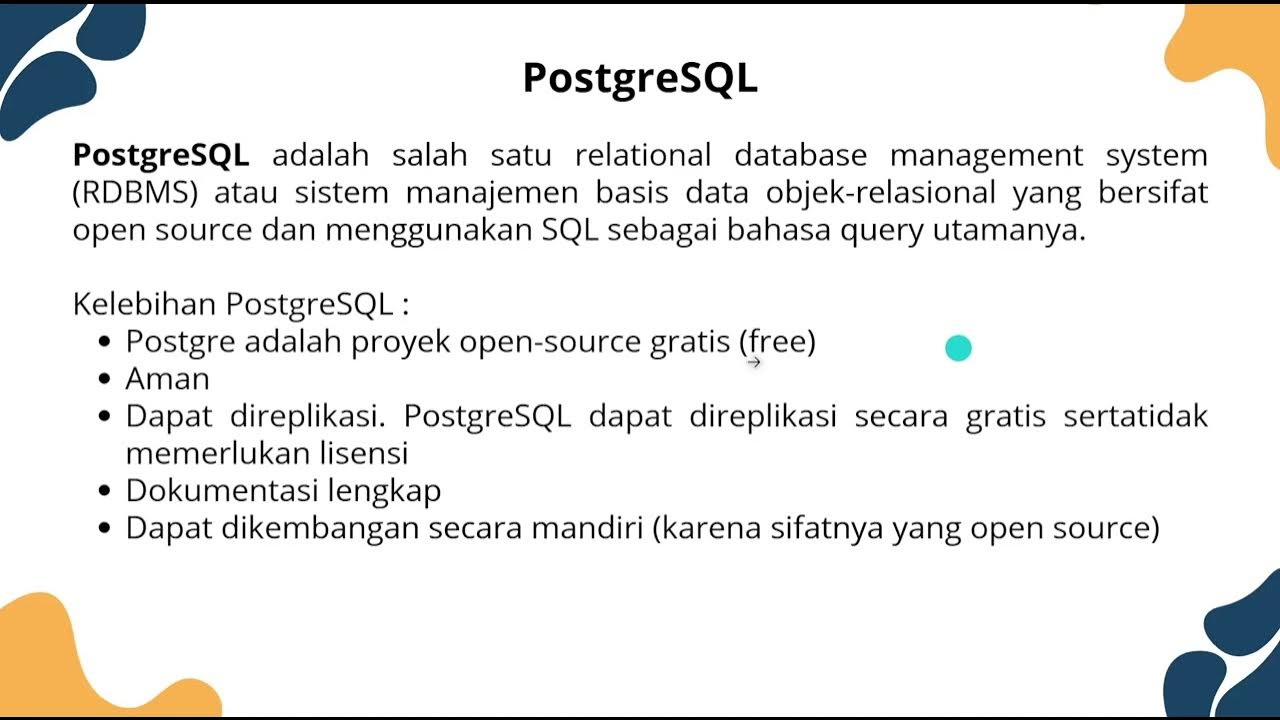SQL vs. NoSQL: What's the difference?
Summary
TLDRIn this insightful video, Jamil Spain, a Brand Technical Specialist, discusses the top five differences between SQL and NoSQL databases, guiding viewers on how to choose between the two. He explains the relational structure of SQL, its vertical scaling, and table-based organization, contrasting it with NoSQL's non-relational, horizontally scalable, and document-based approach. Spain also highlights the dynamic querying of NoSQL and SQL's strength in multi-row transactions. He concludes by suggesting that both can coexist, as demonstrated in an e-commerce application scenario, where transient session data can be managed in NoSQL, while structured transaction data is handled by SQL.
Takeaways
- 🔍 SQL databases use a relational structure, requiring data points to be related and necessitating pre-planning of the data structure.
- 🌐 NoSQL databases are non-relational, allowing for more flexibility and the ability to deal with data structure later in the process.
- 📈 SQL databases scale vertically, requiring more memory and computing power as the database grows.
- 🔄 NoSQL databases scale horizontally, adding secondary nodes to handle and balance usage, utilizing in-memory storage.
- 📊 SQL databases are table-based, focusing on categorizing entities into records and managing relationships.
- 📚 NoSQL databases use a document approach, which can include key-value pairs, hashes, and is more flexible in handling varied data structures.
- 🔎 SQL queries require pre-planning for accessing and joining data, while NoSQL offers more dynamic querying capabilities.
- 💼 SQL is well-suited for multi-row transactions, providing control over data input and the ability to roll back changes.
- 📦 NoSQL handles unstructured data, often in JSON format, which is beneficial for working with dynamic and varied data types.
- 🛒 An e-commerce application can utilize both SQL and NoSQL databases, with NoSQL handling transient session data and SQL managing committed transactions like orders.
- 🤝 The choice between SQL and NoSQL is not always exclusive; combining both can be beneficial for different aspects of an application.
Q & A
What is the main topic of the video script?
-The main topic of the video script is the comparison between SQL and NoSQL databases, highlighting the top five differences to help viewers make an informed decision on which to use.
Who is the speaker in the video script?
-The speaker in the video script is Jamil Spain, a Brand Technical Specialist with the U.S. Financial Services market.
What is the fundamental difference between SQL and NoSQL databases in terms of data structure?
-The fundamental difference is that SQL databases work off a relational database structure, requiring data points to have some type of relation, while NoSQL databases are not relational and do not require data to be pre-structured.
How does SQL scaling differ from NoSQL scaling?
-SQL databases scale vertically, meaning they require more memory and computing power as they grow, whereas NoSQL databases scale horizontally, allowing for the addition of secondary nodes to handle and balance the load.
What is the typical data access method in SQL databases?
-In SQL databases, data access is typically done using the SQL query language, which requires pre-planning on how to access and join data.
How does NoSQL offer more flexibility in data handling compared to SQL?
-NoSQL databases offer more flexibility by allowing dynamic collections of documents with various structures, providing freedom in how data is queried without the need for pre-planning.
What is the advantage of SQL databases in terms of transactions?
-SQL databases are advantageous for multi-row transactions, providing the ability to roll back and forth, thus controlling what goes into the database.
How does NoSQL handle data that is unstructured?
-NoSQL databases handle unstructured data, typically in JSON format, which is great for working with dynamic and flexible data structures.
Can you provide an example of a scenario where both SQL and NoSQL databases could be used together?
-An e-commerce application is an example where both SQL and NoSQL can be used together. NoSQL can handle unstructured session and product data, while SQL can manage structured transaction data that needs to interact with various departments.
What is the speaker's final suggestion regarding the choice between SQL and NoSQL?
-The speaker suggests that instead of choosing definitively between SQL and NoSQL, one could consider using both, depending on the specific needs and scenarios of the application being developed.
How can viewers engage with the speaker for more information or questions?
-Viewers can engage with the speaker by leaving questions in the comments section below the video and by liking and subscribing for more content like this in the future.
Outlines

Esta sección está disponible solo para usuarios con suscripción. Por favor, mejora tu plan para acceder a esta parte.
Mejorar ahoraMindmap

Esta sección está disponible solo para usuarios con suscripción. Por favor, mejora tu plan para acceder a esta parte.
Mejorar ahoraKeywords

Esta sección está disponible solo para usuarios con suscripción. Por favor, mejora tu plan para acceder a esta parte.
Mejorar ahoraHighlights

Esta sección está disponible solo para usuarios con suscripción. Por favor, mejora tu plan para acceder a esta parte.
Mejorar ahoraTranscripts

Esta sección está disponible solo para usuarios con suscripción. Por favor, mejora tu plan para acceder a esta parte.
Mejorar ahora5.0 / 5 (0 votes)






